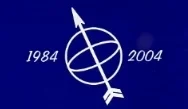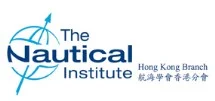Mar03
archive > Log > Log2003
Hong Kong

Pilotage presentation

In January, a group of some 40 Hong Kong branch members and guests attended at the Royal Hong Kong Yacht Club, to hear Mr SH Pau FNI, a senior Hong Kong pilot and former chairman of the branch, give a presentation entitled 'Pilotage in the world's busiest container port'.
There are five pilot station positions in the waters around Hong Kong. Of the 50 pilots on duty each day, on average each pilot may be required to conduct three or four ship movement a day, though this can increase to four or five movements if a typhoon has affected the port.
Ably assisted by Captain Thomas MC Yeung a fellow pilot and also a current Hong Kong branch committee member, who was at the controls of the laptop presentation, Captain Pau began by summarising the requirements for safe piloting: as far as the pilot is concerned this begins, as it does in any port in the world, with boarding the vessel. He described how this operation can sometimes prove daunting, and how he and his colleagues still come across improperly rigged pilot ladders or access equipment in a poor state of repair. The principles of the pilot becoming part of the bridge team and the importance of his central role in communications were discussed, and prompted some questions from the attentive audience.
Captain Pau then posed several questions to the audience, using photographs of real traffic situations in Hong Kong waters, and asking 'What would you do in this situation?' The various scenarios that he and his colleagues face each day include traffic situations involving high speed ferries, slower crossharbour ferries, tug and tows, dredgers and numerous coastal vessels, not to mention the day to day 'normal' vessels such as container ships, passenger ships, tankers, and cargo and container vessels engaged in mid stream cargo operations, the last of which will only be found in Hong Kong.
The special attention that is required when handling the deep draft bulk carriers that pass through Hong Kong and the Ma Wan channel en route to neighbouring ports in southern China, was discussed, including how best to use tugs and escort boats. On some larger vessels two pilots are engaged, with one acting as a co-pilot, to handle communications and back up and monitor the actions of the other pilot and the bridge team. The location and characteristics of the port, and how they affect the work of a Hong Kong pilot were explained. As well as the influence of the typhoon season, these include the seemingly continuous dredging operations, with past and present reclamation projects for the new airport, Hong Kong Disneyland, and Container Terminal No. 9.
The audience included several youngsters who have recently embarked on a career at sea, or are studying a maritime discipline. They were keen to know how one becomes a pilot. Captain Pau advised that the current entry requirement is a foreign-going class 1 deck certificate of competency and the ability to communicate in English and Cantonese. After six months' intensive training and written and oral exams the candidate will be classed as a junior pilot, holding a 2D licence. After four years' satisfactory service, progressing each year to piloting larger vessels, the pilot may then take the class 1 exam to become a senior pilot. As well as practical on-the-job training under the guidance of senior training pilots, simulators are widely used in Hong Kong for pilot training. Pilots also attend at the Star Cruises simulator in Kuala Lumpur and at Bridge Resource Management in Australia.
When long or deep draft vessels are being piloted, an electronic portable pilot unit (PPU) may be taken to the vessel. This instrument is linked to the GPS satellite system and provides real time predictions of the vessel's movements, and hence can act as an aid to the pilot. Information gained from PPUs are also used in the training process.
The presentation was very informative as Captain Pau gave a personal insight into the many factors that make pilotage in Hong Kong waters a challenging and rewarding career. When asked about the future, he forecast more ships needing pilots and more challenges, which include continuing to find suitable competent seafarers to become Hong Kong pilots. After the customary post-presentation dinner in honour of the speaker, a group of 10 members and guests were treated to a cruise around the harbour in a motor boat belonging to one of the pilots, Captain C L Yu.
Contributed by John B Wilson MNI
Seaways March 2003

